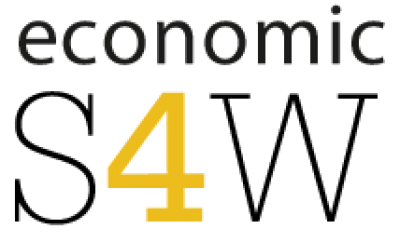Gender Statistics and Analysis – Data Disaggregation by Sex
eS4W wants
What are gender statistics?
Technical information: Indicators, Domains, Sub-domains (key series and related series) and Population Groups
Characteristics of a good indicator
In selecting the suite of gender indicators developed in collaboration with the Gender Statistics Advisory Group, ABS made an overall assessment of whether each indicator was fit for purpose. The conceptual and methodological criteria used to assess and select the indicators are as follows:
The indicator:
The resultant product can be found at: Gender Indicators, Australia. The seventh release of the product was issues on 25 February 2014 and included a Podcast interview with Sex Discrimination Commissioner Elizabeth Brodrock. This generated a good level of media interest, and the product consistently receives positive feedback from a broad cross section of Australia.
The addition ABS has now produced a Snapshot page providing a detailed overview of the key indicators cross the six domains which has evolved into another avenue to promote the product.
ABS recently redesigned this page from which domain-specific hand-outs can now be produced in .pdf formats
What eS4W is doing
eS4W is a member of and represented on the ABS Gender Statistics Advisory Group to consult and advocate for expansion of gender statistics and analysis in relevant statistical domains and for designated disadvantaged population groups. The major contribution to date has been the development and ongoing updating and expansion of the ABS Gender Indicators product.
We also advocate for statistical data that is disaggregated by sex to be publically accessible as a matter of course; in all relevant data domains and collections and by all relevant agencies
Gender Indicators
International indicators and Standards
The mission of the Organisation for Economic Co-operation and Development (OECD) is to promote policies that will improve the economic and social well-being of people around the world.
The OECD provides a forum in which governments can work together to share experiences and seek solutions to common problems. We work with governments to understand what drives economic, social and environmental change. We measure productivity and global flows of trade and investment. We analyse and compare data to predict future trends. We set international standards on a wide range of things, from agriculture and tax to the safety of chemicals.
Report to eS4W on attendance at a roundtable discussion Gender equality statistics and data relating to unpaid caring work and the post-2015 development framework
ILO
The main aims of the ILO are to promote rights at work, encourage decent employment opportunities, enhance social protection and strengthen dialogue on work-related issues.
The Statistics Division is committed to the advancement of the global statistical system. We compile and disseminate global statistical information, develop standards and norms for statistical activities, and support countries’ efforts to strengthen their national statistical systems. We facilitate the coordination of international statistical activities and support the functioning of the United Nations Statistical Commission as the apex entity of the global statistical system.
Education
The National Centre for Vocational Education Research (NCVER) is a not-for-profit company owned by state, territory and federal ministers responsible for training.
Department of Education
The Australian Government Department of Education is responsible for national policies and programmes that help Australians access quality and affordable childcare; early childhood education, school education, post-school, higher education, international education and academic research.
Democracy, governance and citizenship
WGEA Women in leadership census
Between 2002 and 2012, the Australian Census of Women in Leadership was the pre-eminent body of research tracking the representation of women in board and senior executive positions in ASX-listed companies. In 2012, for the first time, the Census extended the analysis from ASX 200 companies to ASX 500 companies, providing a more complete picture of women in leadership.
Other Resources
ABS Gender Statistics Advisory Group
Dalma Jacobs, Australian Federation Graduate Women, represents eS4W on the ABS Gender Statistics Advisory Group.
GSAG Meeting – 27 May 2014
Agenda item 2 – Summary of last meeting
Agenda item 7 – Expanding Gender Indicators
Disability and Work, Australian Social Trends, March Quarter 2012
Gender Indicators (ABS website)
– Gender Indications – Snap Shot – PDF (gender_indicators_snap_shots)
Useful websites
ABS releases on Mothers day and Father’s day http://www.abs.gov.au/ausstats/abs@.nsf/mediareleasesbyCatalogue/89B79CB911E06959CA257CD30003CCD0?Opendocument
Gender Economics Global Conference 2014 to be held in Sydney on 10-11 June 2014
ABS Personal Safety Survey, Australia – http://www.abs.gov.au/AUSSTATS/abs@.nsf/ProductsbyReleaseDate/6D54FBC240E0D58FCA2571C50074AF1C?OpenDocument
